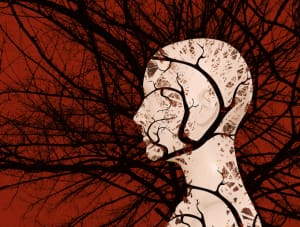
Somatization of Trauma: Helping our Body Heal from Trauma
$32.00
Somatic symptoms are common for clients who have PTSD, depression, and anxiety They are common physical manifestations of traumatic symptoms and can include physical pain, gastrointestinal complaints, and sexual dysfunction. For clinicians, treating clients for somatic symptoms can be challenging. Firstly, clients experience genuine physical discomfort, creating a therapeutic alliance while somatization is a delicate balance. Secondly, because of the mind-body connection, traumatized, depressed, and anxious people are more vulnerable to physical illness, and differentiating between chronic illness and somatic symptoms is challenging. Strategies to understand, engage, and treat clients will be provided to understand clients with somatic complaints better.
Upon completion of this training, participants will be able to:
- Identify what somatization is, how it manifests itself in clients across their lifespans, how it relates to the mind-body connection, and how it manifests itself in clients with psychological stressors.
- Determine the various disorders that result in somatization, such as PTSD, depression, anxiety (especially illness-related anxiety), somatization disorder, and conversion disorder.
- Identify psychotherapeutic strategies to work with clients who have somatic complaints that help preserve the therapeutic relationship and advance the well-being of clients.
Social workers completing this course receive 2 Clinical asynchronous continuing education credits.
For other board approvals, this course qualifies for 2 hours of Trauma, Evidence-Based Practices, Clinical, and General Skill Building continuing education training.
Course Instructor: Dr. Jillian Graves, LCSW, Ph.D.
Recording Date: 8/21/2024
Course Format: Recorded Live Webinar with downloadable presentation slides and/or handouts, evaluation, and a required quiz. The learner is required to pass with a 70% or higher to achieve the CE certificate of completion. The learner is able to reset the test until a satisfactory score is achieved.
CE Training Workshops, LLC, provider #1770, is approved as an ACE provider to offer social work continuing education by the Association of Social Work Boards (ASWB) Approved Continuing Education (ACE) program. Regulatory boards are the final authority on courses accepted for continuing education credit. ACE provider approval period: (will fill in the dates once this has been approved).
CE Training Workshops, LLC has been approved by NBCC as an Approved Continuing Education Provider, ACEP No. 7091. Programs that do not qualify for NBCC credit are clearly identified. CEUs On-Demand, LLC is solely responsible for all aspects of the programs.
System Requirements: Firefox, Chrome, Brave, Safari, Edge on any modern operating system (Windows, MacOS, Linux, Android, iOS). A desktop browser is recommended. We do not provide support resources for issues encountered using a mobile device.
For more information about our policies and board approval statements, please visit our FAQS page.
Jillian Graves, LCSW, Ph.D. is an associate professor at Eastern Michigan University in the School of Social Work. She is currently the co-director of the IPE Center in the College of Health and Human Services.
Somatization of Trauma: Helping Our Bodies Heal From Trauma (2HR) Syllabus
I. Understanding Somatic Symptoms
- Defined as the physical experience of emotional distress
- Includes both involuntary symptoms and voluntary presentations (e.g., factitious disorder)
- Chronic pain and illness often interact with psychological stress
- Somatic symptoms may reflect emotional unawareness but also real physical pain
II. Diagnoses and Terminology
- Somatic Symptom Disorder (SSD): distress with or without medical cause
- Functional Neurological Disorder (FND): neurological-like symptoms without organic cause
- SSD and FND overlap but differ in focus (e.g., worry vs. motor/sensory symptoms)
- Trauma often plays a significant role in both disorders
III. Somatization in Youth
- Case examples of teens with chronic fatigue or stomachaches
- Important to assess for trauma, stressors, and emotional avoidance
- Encourage curiosity, not assumptions, in clinical exploration
IV. Intersections with Anxiety and Depression
- Anxiety commonly produces physical symptoms like fatigue, GI issues, and pain
- Depression often coexists with somatic complaints and complicates diagnosis
- Chronic pain and emotional distress are closely linked
V. Trauma and Psychosomatic Illness
- Suppressed or misunderstood sensations can result in psychosomatic symptoms
- Conditions linked to trauma: migraines, fibromyalgia, IBS, chronic fatigue
- Dissociation and somatization often share roots in trauma exposure
VI. Personality Disorders and Somatic Symptoms
- Personality disorders show high comorbidity with somatization
- Specific patterns: Dependent PD (nurturance-seeking), Avoidant PD (emotional suppression), Histrionic PD (attention-seeking)
- BPD linked to higher somatization and chronic illness; 90% have trauma histories
VII. General Treatment Principles
- Validate that symptoms are real, even if psychologically rooted
- Use a biopsychosocial framework and coordinate care across disciplines
- Shift focus from symptom elimination to functional improvement
VIII. Cognitive and Behavioral Interventions
- Psychoeducation and reattribution therapy help link physical and emotional experiences
- CBT targets catastrophic thinking, secondary gains, and avoidance behaviors
- Identify and reduce “safety behaviors” like reassurance-seeking or over-testing
IX. Exposure and Symptom Induction
- Gradual exposure to avoided sensations (e.g., using a straw to mimic breathlessness)
- Helps clients reframe symptom meaning and reduce anxiety
- Builds tolerance and emotional resilience through controlled induction
X. Integrated Healing Strategies
- Combine somatic awareness, narrative work, and psychoeducation
- Use visual tools, symptom tracking, and mindfulness
- Emphasize long-term integration of body-mind awareness and emotional safety


